International Journal of Aquaculture and Fishery Sciences
Comparative analysis of production performance in integrated aquaculture system and single system of production of fish, rice, poultry and pig
EK Ajani, BT Fregene and OA Onada*
Cite this as
Ajani EK, Fregene BT, Onada OA (2020) Comparative analysis of production performance in integrated aquaculture system and single system of production of fish, rice, poultry and pig. Int J Aquac Fish Sci 6(3): 074-081. DOI: 10.17352/2455-8400.000060As the population of Nigeria continue to increase rapidly, there is corresponding increase in demand for food. In order to secure food security of the growing human population, it is imperative that a suitable agricultural production system that will meet the increasing demand for food be embraced. An important way of increasing agricultural production is through Integrated Aquaculture (IA). IA is known to diversify production thereby ensuring increase productivity and profitability in an ecofriendly manner. This project assesses the productivity of IA as a method of increasing food production.
Two integrated combinations, Fish, Rice cum Poultry (FRPo) and Fish, Rice cum Pig (FRPi) were studied for production performance for period of one year. Comparison between productivity of (FRPo), (FRPi) and single system of production of fish, rice, poultry and pig were carried out. Seventeen farms (five fish farms, five poultry farms, five pig production farms and two rice plantations) were selected for the comparison based on their close proximity with the research site so as to reduce spatial error and error due to the influence of climate and weather. Production performance data were monitored daily in the IA systems and in-depth interview was used to collect information on single system of production of rice, fish, poultry and pig. The data collected were subjected to descriptive statistics such as mean, median, and frequency using SPSS version 22.
The result of production performance showed that the average weight of fish under FRPo at 12 weeks was 309.9±1.78g; the feed conversion ratio and percentage survivability of the fish under this system were 1.39 and 72.6 respectively; while twenty five kilogram of rice was harvested per 50m². Also, the average weight of fish under FRPi at 12 weeks was 179±1.3g; the feed conversion ratio and percentage survivability of the fish under this system were 1.25 and 50 respectively; twenty eight kilogram of rice was harvested per 50m² under FRPi. The average feed conversion ratio and percentage survivability of fish under the single system of production studied were 1.1 and 78.99 respectively and average weight of rice harvested per 50m² was 11.3kg.
Integrated fish farming was more productive and profitable than unitary system of farming as it ensured a spread of financial risk because of its varied and diversified nature in rearing of fish, animals and crops. The research studied also shows that IA offers cost saving strategy of operation in the manner that conserve the ecosystem by converting wastes to resources. IA therefore is a more productive system than the unitary system of production.
Introduction
In the agricultural sector of the Nigerian economy which employs about 70% of the active labour force, fish production occupies a unique position because it is the cheapest source of animal protein consumed by the average Nigerian, accounting for up to 50% of the total animal protein intake [1]. The vast production from capture fisheries which represent one of the major aspects of fish production are now being depleted and labeled as unsustainable in its present state [2]. On the other hand, aquaculture which is a rational production of fish under controlled conditions is increasing in its intensification as a desirable way of augmenting the fish harvest from wild sources [3]. Fish production from aquaculture is therefore considered as the only way of increasing fish production as capture from the wild is dwindling by the day. An increase in the population of Nigeria leads to a corresponding increase in demand for fish and animal protein. Thus, there is the need for suitable aquaculture systems that can meet the increasing demand for fish and other protein food sources; while entrenching maximum and sustainable utilization of the available limited resources with minimal negative impacts on the environment. In view of this, integrated fish farming also called integrated agriculture or integrated aquaculture system can guarantee food production increase and profitability on investment through optimum utilization of resources with minimal wastage [4].
Integrated fish farming is a diversified and coordinated way of farming with fish as the main target along with other farm produce [4]. The aim of integrated fish farming is to create a mutually beneficial system that will lead to maximization of productivity through optimum resource use [5]. For example, fish production can be combined with maize production, in this case, waste water from pond can be used to irrigate the maize plantation, while the maize and its husk after maturity can be used as part of the ingredient for fish feed production. The operation of the two systems in this way makes the system a mutually beneficial one, with zero waste, more productivity and offer protection to the ecosystem through waste water utilization.
Integrated fish culture has been considered an ideal method of land use, which has been practiced in Asia for several centuries [6]. Although significant breakthrough has been achieved in Asia through integrated aquaculture, not much has been achieved in Africa with special reference to Nigeria [6]. In Nigeria, integrated fish farming has been reported across Nigerian states in which 50% of fish farmers combined poultry, piggery or livestock with fish production, while integrated fish cum crop production is also on the rise in several states [7]. The form of integration depends on the prevalent environmental conditions, social norms, cultural values and religious factors [8]. For example, in the northern part of Nigeria, fish cum pig integration is not advisable because of religions bias towards consumption of pork, fish cum rice combination therefore becomes the common practice, meanwhile, the southern part of Nigeria are found to be more prolific with the combination of fish and poultry or pig with vegetable as the major crop . In order for the country to be self-sufficient, there is the need for farmers to engage in a result oriented farming system that can guarantee and sustain adequate food security in environmentally friendly manner [8].
Methodology
The study area
The experiment was conducted on the experimental plot of the Department of Aquaculture and Fisheries Management, University of Ibadan, Ibadan, Oyo State, Nigeria, (latitude 7°26’40.35”N and longitude 3°53’58.29” E). The study site is a fragment of the Department fish production centre. It consisted of 4 production earthen ponds, a reservoir, a maggot production unit, Pig sty and a pen house with 3-tiers cage consisting of 24 compartments.
Experimental facilities
Poultry house and cage: The poultry house (3.9m by 3.7m) was constructed with fabricated blocks that extend from its foundation to height of 1.2m above the foundation as presented in Plate 1. Wire netting was used to complete the walls of the house to the roof region. A channel pipe extended from the poultry house to the pond such that the excreta of the birds can easily be flushed through this channel pipe into the pond. A 3-tier cage with automatic drinker shown in Plate 2 was installed into the poultry house during house construction. Each tier of the cage has 4 compartments being a total of 24 compartments.
Pig sty: The pig sty of three rooms (each of 3.65m and 3.5m) was constructed of blocks and concrete floors with enough openings for cross ventilation (Plate 3). Each room was labeled unit 1, unit 2 and unit 3 respectively. In each of the rooms, provision was made for a drinker and a feeder for the pigs. The drinking troughs were 0.45m x 0.55m in each of the rooms, while the feeders were 1.05m×0.6m.
Fish ponds: Two fish production pond (Pond A: 17m by 11m) and (Pond B: 18m by 13m) with inlet water pipe that collects water from the reservoir tank (25m by 16m) was used for fish culture for 12 weeks. Pond A was constructed to receive waste and maggot generated from poultry excreta, while pond B was made to receive waste and maggot produced from pig excreta. An average of 5g (1000 pieces) and 10g (1120 pieces) Clarias gariepinus juvenile was stocked in pond A and B respectively. The area of the ponds that accommodated the cultured fish (Plate 4) was between the wall of the rice paddy and the embankment.
Rice bed: The rice bed/paddy (rectangular in shape) was 12m by 5.5m and 14m by 6.5m in pond A and B respectively, with height 50cm in each of the ponds. The rice bed (Plate 5) was constructed at the centre of the pond such that an allowance of 1.3m width was created between the 4 sides’ wall of the bed and the embankment.
Maggot production unit
The maggot production unit consisted of the housing, production bowl and a platform for keeping the bowl. The housing 3m by 3m with height of 4m was made with framework of wood surrounded by wire mesh. It has an interior platform with upper and lower shelves which carries the bowl for production. The upper shelf carries the bowl for attractant, while lower shelf carries the bowl with the fecal materials. Two bowls were placed at the lower shelf each containing fecal materials from poultry and pig respectively. The attractant was used to attract flies which eventually lay eggs in them. Samples of the attractant were collected and used to inoculate the fecal materials in the bowls of the lower shelf.
Experimental procedure
Two experimental setups A and B were created. The setup A encompasses the production of fish, rice and poultry, while the setup B involves the production of fish, rice and pig.
Fish, rice and poultry integration
Fish: One thousand pieces of 5g average of African Catfish Juvenile Clarias gariepinus were gotten from a reputable fish farm in Ibadan and were stocked with fingerlings in pond A. The fish were fed 5% body weight with 25% crude protein of formulated diet and 2500g of maggot produced from poultry waste for 12 weeks. After harvesting, the fish were smoked to add value before they were sold. During the period of production, growth performance, mortality and cost of fixed input, variable input and revenue generated from sale of fish were documented.
Rice: Rice seeds (WITA 4) which is upland rice was gotten from National Seed Crop Research Centre in Ibadan and were pre-planted in the nursery for 3 weeks after which the seedlings were transferred permanently to the pond. Rice seedling was planted 10cm and 20cm intra and inter spacing respectively on a rectangular rice paddy 10m by 5m at the centre of the pond, and took about 4 months before complete maturation. After, harvesting, the rice seeds were dried, cleaned and processed before they were sold. During the period of production, cost of fixed input, variable input and revenue generated from sale of rice were recorded.
Poultry: Sixty pieces of point of lay (POL) 16 weeks old dominant black breed of layer birds was stocked into the 3-tier cage. The birds were fed with 18% crude protein of grower mash for 4 weeks after which 16% crude protein layers mash was introduced. Vaccination (Lasota, Gumboro e.t.c) and medication (Antibiotics, Vitamins e.t.c) were given as need requires. Production performance data which include; bird weight increase, fecal weight and egg production were recorded on daily basis, while routine management practices were carried out as required.
Fish, rice and pig integration
Fish: One thousand one hundred and twenty pieces of 10g average of African catfish Juvenile Clarias gariepinus were gotten from a reputable fish farm in Ibadan and were stocked in pond B. The fish were fed 5% body weight with 25% crude protein of formulated diet and 2500g of maggot produced from pig waste for 12 weeks. After harvesting, the fish were smoked to add value before they are sold. During the period of production, growth performance, mortality and cost of fixed input, variable input and revenue generated from sale of fish were documented.
Rice: Rice seeds (WITA 4) which is upland rice was gotten from National Seed Crop Research Centre in Ibadan and were pre-planted in the nursery for 3 weeks after which the seedlings were transferred permanently to the pond. Rice seedling was planted 10cm and 20cm intra and inter spacing respectively on a rectangular rice paddy 12m by 6m at the centre of the pond, and took about 4 months before complete maturation. After, harvesting, the rice seeds were dried, cleaned and processed before they were sold. During the period of production, cost of fixed input, variable input and revenue generated from sale of rice were recorded.
Pig: 10 units of grower pig were stocked in the sty. They were fed 5% body weight with pig grower feed, this was done in the morning and evening. Seven out of 10 pigs were fattened and sold as pork at the rate sold in the market, while the remaining 3, 2 females and 1 male were kept for reproduction. During the period of production, cost of fixed input, variable input and revenue generated from sale of pork were recorded.
In-Depth Interview with Farm Owners of Single System of Fish, Rice, Poultry and Pig Production.
In order to compare between productivity of integrated system and single system of production of fish, rice, poultry and pig, Seventeen farms were visited which include five fish farms, five poultry farms, five pig production farms and two rice plantations. The farms visited were selected based on their close proximity with the research sites so as to reduce spatial error and error due to the influence of climate and weather. In-depth interview was carried out with owners of farms and production data collected were compared with the data recorded for integrated system under study.
Data analysis
Descriptive statistical analysis: Descriptive statistics such as mean, median, and frequency was used to describe the production performance of the system.
Result
Rice, fish and poultry production performance
The production performance of rice, fish and poultry were presented in Figures 1-4 and Tables 1-4 respectively. The average weight of fish and poultry birds at 12 weeks was 309.9±1.78g and 2.3±0.93kg respectively. The egg production increases from 0% to 71% from start of egg lay to 3 months of lay, as presented in Figure 4, from this time to the point of culling, egg production fluctuate between 65-82% which gives average production of 42eggs per day. The growth of rice in terms of increase in foliar and length increase was rapid in the first 8 weeks of planting, the growth reduced after 8 weeks and the rice stands started to tassel. Thereafter, the rice spent 2 months for the tassel to fully develop and dry. Twenty five kilogram of rice was harvested, while 20kg of rice was gotten after the husk was removed. The feed conversion ratio of the fish cultured was 1.39 and percentage survivability was 72.6 as shown in Table 4.
Production performance under Rice, Fish and pig were presented in Figures 5-9 and Tables 5-8 respectively. The growth of rice in terms of foliar and length increase was drastic in the first 8 weeks of planting; and reduced after 8 weeks when the rice stands started to tassel. Thereafter, the rice spent 2 months for the tassel to fully develop and dry. Twenty eight kilogram of rice was harvested, while 23kg of rice was obtained after the husk was removed. The pigs gained average of 0.4kg of weight daily, while the pigs kept for reproduction produced average of 10 piglets per cycle of reproduction. The feed conversion ratio of the fish cultured was 1.25 and percentage survival was 50; while the average weight at harvesting was 179g.
Production indices
Field responses from the in-depth interview with farm owners and physical examination of production variables formed the data subjected to comparison with the integrated system. The variables of production of integrated fish farming studied were presented in Table 9 and were compared with the variables of single system of production.
Discussion, recommendations and conclusion
Discussion
Generally, the results of the research fell within the desirable and acceptable limits of values that have been documented by previous research.
Production performance: This research employed synergistic approach to unify the production of fish, rice cum poultry and fish, rice, and pig as a single system of production. The idea behind the synergy was to ensure complete recycling of waste from the system into productive resources for use to enhance production.
The production performance of systems studied which are fish, rice cum poultry and fish, rice, cum pig was within favourable limits and performed better when compared with production performance of single system of production (Tables 4,8). The productivity of rice under the integrated arrangement of fish, rice cum poultry and fish, rice, and pig are 25 and 27kg/60m2, this values falls within the range reported by Lightfoot, et al. [9], while fish productivity in terms of FCR under fish, rice cum poultry and fish, rice cum pig were 1.39 and 1.25 respectively, these values exceeds the values recorded for single system of production with average value of 1.7, this agrees with the range earlier reported by Yaro [10]. The average egg production per day from the integrated system was 42 which give 70% productivity, although this value is lower than the value recorded for single system of production which was 80% productivity, but fall within the range stated to be desirable by [11].
Production indices: From the comparative studies conducted on IFF and Single production system, it was observed in reference to Table 9 that:
♦ Cost of purchase of feed for fish was relatively reduced in IFF when compared with single system of production with similar production capacity as observed in farms where In-depth interview was carried out. This was due to the inclusion of maggot in the diet of the fish cultured under IFF; this assertion has already been confirmed by the work of Edwards, et al. [12].
♦ Land management was also a major advantage of IFF over single production system. In IFF the size of land needed for production is relatively less than that required for single system of production, this was because the land required to operate IFF in a single location is less than the overall land requirement to operate single production system at different locations, this corroborated the submission of Nnaji, et al. [13], that integrated fish farming ensures land management.
♦ Reduction in the cost of purchase of inorganic fertilizer is also an important aspect of IFF in contrary to single operating system; this follows the result recorded by Vincke [14].
♦ The level of utilization of fish offal, fish oil, and rice bran in the feed of fish, poultry and pig also is a plus to IFF.
- FDF (2009) Publication of the federal department of Fisheries for year 2009, Victoria Island Lagos 7: 23-25.
- Eyo AA (2003) Fundamental of Fish Nutrient and Diet Development – An overview In: A.A. Eyo (Ed). National Workshop on Fish Feed Development and Feeding Practises in Aquaculture organized by Fisheries Society of Nigeria, New Bussa, Niger State 2-6.
- Falaye AE, Omoike A, Ajani EK, Olasebikan OB (2012) Replacement of Maize using (Vigna unguiculata) hull meal in practical feeds of African catfish( Clarias Gariepinus) fry. International Journal of Plant, Animal and Environmental Sciences 2: 178-182. Link: https://bit.ly/3eXOcc4
- Onada OA, Ogunola OS (2016) Climate Smart Aquaculture: A Sustainable Approach to Increasing Fish Production in the Face of Climate Change in Nigeria. Int J Aquac Fish Sci 2: 012-017. Link: https://bit.ly/3f3udIX
- Asala G (1994) Principles of Integrated Aquaculture. In: AA Olatunde, J.S.O Ayeni and I.M Ogundeji (eds). Processing of National Fisheries 32, Workshop on Aquaculture Development, Fish Seed Production and Post Harvest Tech. NIFFR-FACU.
- Eyo AA, Ayanda JO, Adelowo EO ( 2006) Essentials of integrated fish farming. National Institute of Fresh Water Fisheries Research, P.M.B 6006, New Bussa, Niger State 1-207.
- AIFP (2005) Farming Nigeria waters. Newsletter of the Aquaculture and Inland Fisheries project of the National special Programme for food security in Nigeria. FAO Office Abuja Nigeria 3: 2-4. Link:
- Ayinla OA (2003) Integrated Fish Farming: A Veritable tool for poverty alleviation/hunger eradication in the Niger Delta Region. 14-16 In: A.A. Eyo and J.O Atanda (Eds). Conference proceedings of Fisheries Society of Nigeria, Owerri, Nigeria 2003 Eyo (Ed). National Workshop on Fish Feed Development and Feeding Practices in Aquaculture organized by Fisheries Society of Nigeria, New Bussa, Niger State 2-6. Link: https://bit.ly/3f01QeJ
- Lightfoot CA, Dam V, Cost-Pierce B (1992) What is happening to the rice yields in rice-fish systems? 177-183. In C.R. dela Cruz, C. Lightfoot, B.A. Costa-Pierce, V.R. Carangal and M.P. Bimboa (eds). Rice-fish research and development inAsia. ICLARM Conf Proce 24: 457.
- Yaro I (2001) Feasibility of adoptiing rice-cum-fish culture system to enhance the development of conventional aquaculture participation in Niger State. In Eyo, A.A. and Ajao, E.A. (Eds) 31-36. Proceedings of Fisheries Society of Nigeria held in Maiduguri 4th 9th 7p. Link: https://bit.ly/30QgH6r
- FAO (2003) Egg marketing. A guide for the production and sale of eggs. FAO Agricultural services bulletin 150. Rome, Italy 80. Link: https://bit.ly/2P0Oa8W
- Edwards P, Kaewpaitoon K, McCoy EW, Chantachaeng C (1986) Pilot small-scale crop/livestock/fish integrated farm. AIT Research Report 184, AIT, Bangkok, Thailand, 131.
- Nnaji CJ, Okoye FC, Ogunseye JO (2003) Integrated Fish Farming practices with special reference to combination rates production figures and economic evaluation. In: AA Eyo, JO Ayanda (eds). Conference proceedings of fisheries society of Nigerian (FISON) Owerri 8th-12th 173-178. Link: https://bit.ly/2XfAnjp
- Vincke M (1988) Developing productive systems under village conditions. In: Village Level Aquaculture Development in Africa, H.R. King and K.H. Ibrahim (eds), Proc. of the Commonwealth consultative workshop on Village Level Aquaculture Development in Africa, Freetown, Sierra Leone, 14–20 February 1985, Commonwealth Secretariat, London 37-57. Link: https://bit.ly/32YFdov

Article Alerts
Subscribe to our articles alerts and stay tuned.
 This work is licensed under a Creative Commons Attribution 4.0 International License.
This work is licensed under a Creative Commons Attribution 4.0 International License.
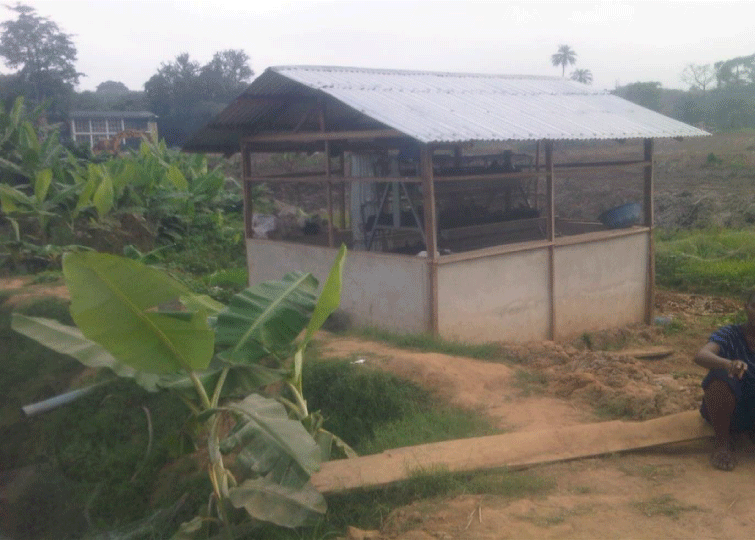
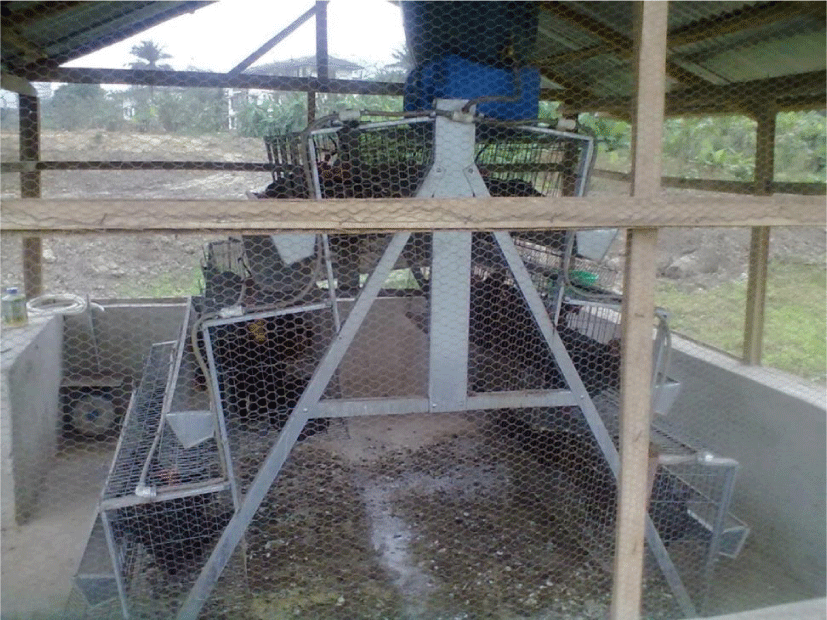
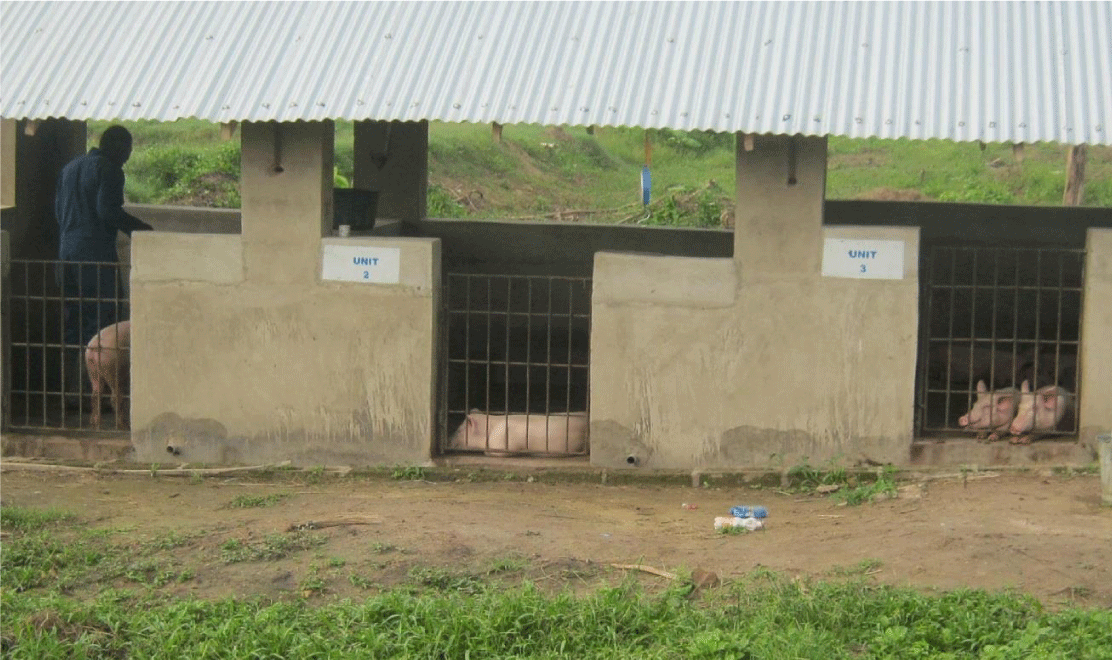
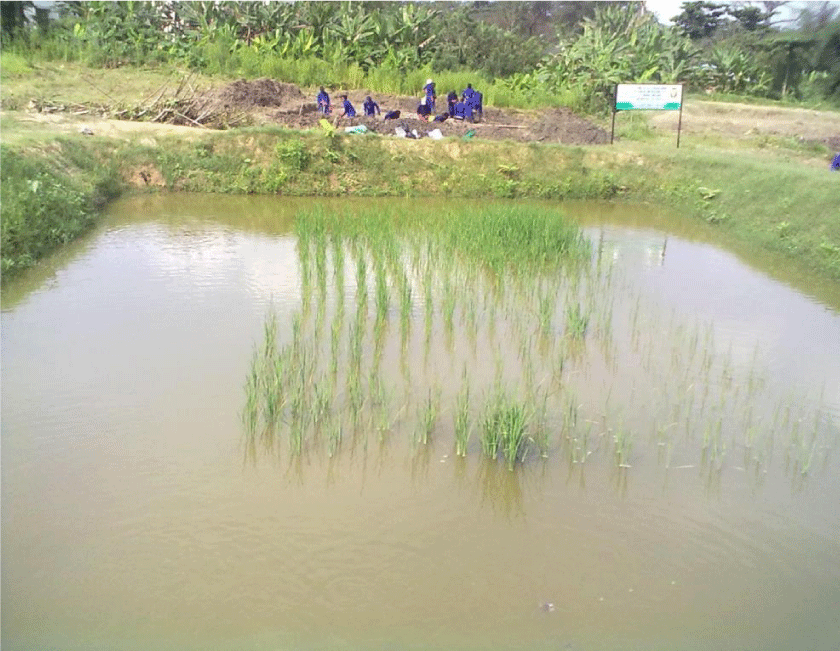
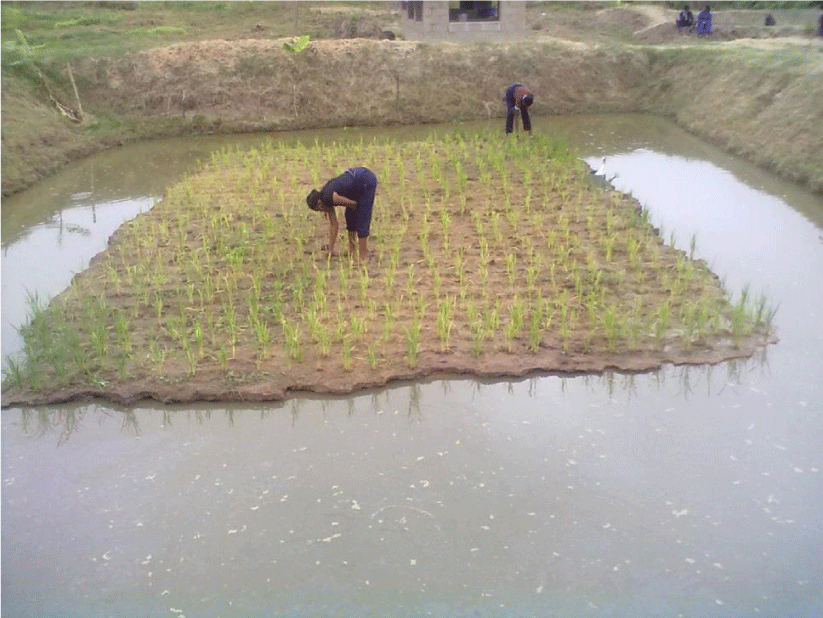
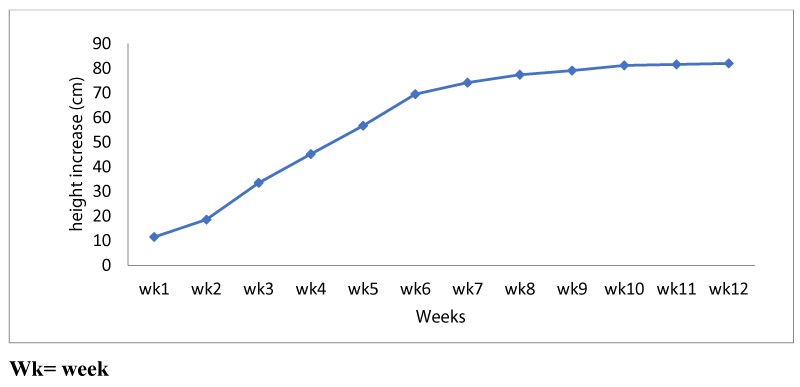
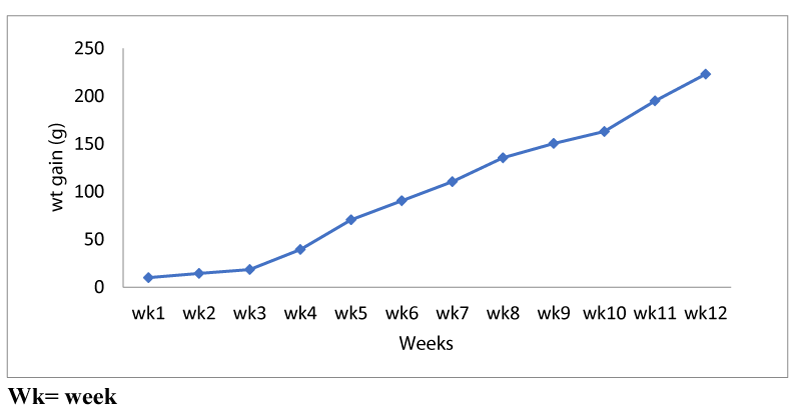
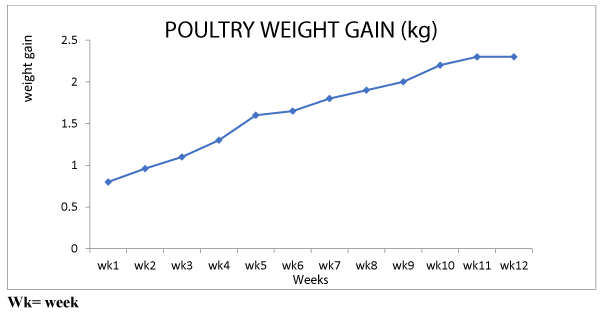
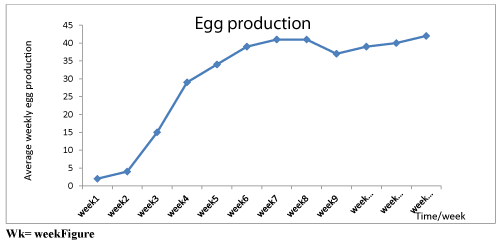
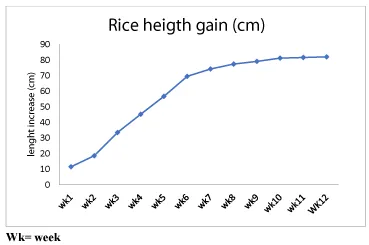
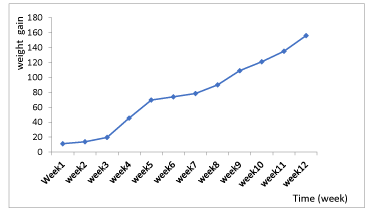
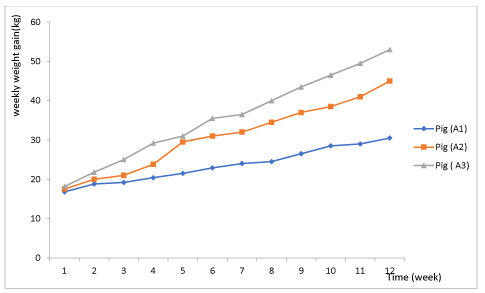
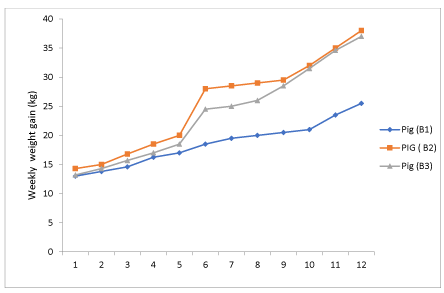
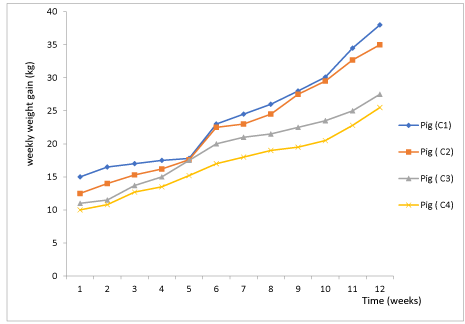
 Save to Mendeley
Save to Mendeley
